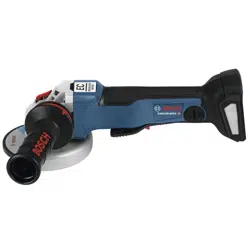Loading ...
Loading ...
Loading ...

-18-
Sanding Operations
SELECTING SANDING DISC
Sanding discs are made of extremely hard
and sharp aluminum oxide grits, phenol-resin
bonded to a sturdy fiber backing for fast
heavy-duty service and long life. The discs
vary as to size and spacing of the abrasive
grits. OPEN COAT (type H) — used for soft
materials and on paint or varnish. CLOSED
COAT (type K) —used for metal, hardwood,
stone, marble and other materials.
Sanding discs range in grit from 16 (very
coarse) to 180 (very fine). To obtain best
results, select sanding discs carefully. Many
jobs require the use of several grit sizes and
at times both “open coat and closed coat”
discs are required to get the job done faster.
See chart for application examples.
Operation: Refinishing painted wood or metal surfaces.
REMARKS GRIT
To remove paint and to smooth Coarse
surface irregularities. 16-24-30
To smooth Medium
the rough sanding. 36-50-80
To remove scratches left by Fine
previous discs. 100-120
To smooth surfaces for painting, Very Fine
polishing or waxing. 150-180
SANDING TIPS
For best results, tilt the Disc Sander at a 10° to
15° angle while sanding so that only about 1"
of the surface around the edge of the disc
contacts the work.
If the disc (accessory) is
held flat or the back edge
of the disc comes in contact with the work, a
violent thrust to the side may result.
If sander is tilted too much, sanding action will
be too great and a rough cut surface or
gouging and snagging will result.
Guide the Disc Sander with crosswise strokes.
Be careful not to hold the sander in one spot
too long. Do not use a circular motion, as this
makes swirl marks. Test before use on scrap stock.
Do not force or apply pressure when sanding.
Use only the weight of the tool for pressure.
Excess pressure actually slows the tool down.
If faster stock removal is desired, change to a
coarser grit disc.
Remove gummy paint from metal with an
“open coat” disc. Sand until sparks start to
appear, then stop and change to a “closed
coat” disc to remove any remaining paint.
SANDING WOOD
When sanding wood the direction of the disc
motion at the contact point should parallel the
grain as much as possible. The rapid cut of
discs and the swirl type scratch pattern they
occasionally create generally prohibit their use
for producing the final finish.
Scratches and circular marks are usually the
result of using too coarse a grit. When
changing to a finer grit, move across the sand -
ing lines that were made by a previous coarser
disc.
SANDING METAL
When sanding automobiles or appliances,
wipe the metal clean with a non-flammable
solvent or commercial cleaner to remove all
wax and grease. By doing this first, the
sanding discs will sand better and last longer.
For heavy duty work, use a coarse grit disc
first. Follow-up with a medium grit to remove
scratches. To produce smooth finish, use fine
grit disc.
160992A3WF 08-18 GWS18V-45C.qxp_GWS 8/28/18 1:07 PM Page 18
Loading ...
Loading ...
Loading ...
